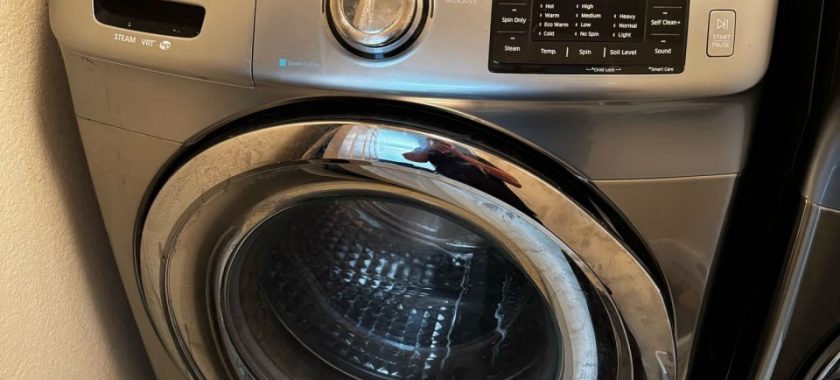One of the most common issues homeowners encounter with washing machines and dishwashers is trouble with the drain pump and water drainage system. These problems, while frustrating, can often be diagnosed and resolved with the right approach. However, to avoid damaging the appliance further, it’s essential to know the signs of drain pump issues, their common causes, and how to proceed with repairs.
⠀
Signs of Drain Pump and Water Drainage Problems
⠀
The first step in addressing any appliance issue is identifying the symptoms. Drain pump problems typically present themselves with the following signs:
⠀
- Water Fails to Drain: If water remains in the drum or tub after a cycle, this usually indicates a blockage in the drain system or a malfunction in the pump.
⠀
- Unusual Noises: Grinding, rattling, or buzzing sounds during the drain cycle can signal that the pump impeller is jammed or that foreign objects are obstructing the pump.
⠀
- Error Codes: Modern washing machines and dishwashers often display error codes to indicate specific issues. If you see codes related to drainage, consult the manual for guidance on potential pump issues.
⠀
- Slow Drainage: A machine that drains slowly may have a partially blocked hose or filter, which restricts the water flow and can eventually cause the pump to overwork and fail.
⠀
Common Causes of Drain Pump Failure
⠀
Several factors can lead to drain pump and drainage system problems:
⠀
- Blocked Filter: The filter in the drainage system is designed to catch debris, but if not cleaned regularly, it can become clogged and restrict water flow. This strain on the pump can lead to eventual failure.
⠀
- Foreign Objects: Items like coins, hairpins, or other small objects often end up inside washing machines. These objects can make their way into the pump, causing jamming or damage.
⠀
- Damaged Pump Impeller: The impeller is a small fan-like component that moves water out of the drum. If it’s broken or damaged, the pump will struggle to drain water effectively.
⠀
- Worn Pump Motor: Over time, the motor powering the drain pump can wear down or burn out, especially if the appliance has been in use for many years.
⠀
Diagnosing Drain Pump Problems
⠀
Proper diagnosis is key to determining whether the drain pump needs repair or replacement. Here are some basic steps to help troubleshoot:
⠀
- Check the Filter and Hose: Begin by inspecting the drain filter for debris. Most filters are easily accessible near the front or back of the machine. Clean the filter thoroughly and ensure the drain hose is clear of obstructions.
⠀
- Listen for Strange Noises: During the drain cycle, pay attention to any unusual sounds. Grinding or buzzing noises may indicate an object is obstructing the pump or that the impeller is damaged.
⠀
- Test the Pump’s Power Supply: Use a multimeter to check for continuity in the pump motor, which helps determine if it’s receiving power correctly. If there’s no continuity, the motor may be faulty.
⠀
- Inspect the Pump Impeller: If the impeller isn’t spinning smoothly or has visible damage, it may need replacement. Carefully remove the pump to inspect it, taking care to follow the manufacturer’s instructions.
Repair Options for Drain Pump and Water Drainage Issues
⠀
If you’ve identified an issue with your appliance’s drain pump or water drainage system, you have a few repair options:
⠀
- Cleaning and Maintenance: Often, cleaning the filter and hoses can solve minor drainage issues. Regular maintenance, like removing lint or debris buildup, prevents clogs and helps the pump operate efficiently.
⠀
- Replacing Damaged Parts: If you find damage to the pump impeller or motor, you may need to replace the affected components. Some parts are relatively affordable and can be replaced without the need for a technician if you’re comfortable with DIY repairs.
⠀
- Professional Repair Service: For complex issues, such as a failing pump motor or internal electronic faults, hiring a professional technician is often the best option. A certified technician can efficiently diagnose and repair the problem, saving you from potential damage that may occur with DIY attempts.
⠀
Prevention Tips to Avoid Future Drain Pump Problems
⠀
- Regularly Clean the Filter: Aim to clean the appliance’s filter every month, especially if you use it frequently. This will prevent clogs and reduce strain on the pump.
⠀
- Check for Foreign Objects: Always check your pockets before placing clothes in the washing machine. Objects like coins or hairpins can damage the pump if they find their way inside.
⠀
- Keep an Eye on Error Codes: If your machine shows error codes, don’t ignore them. Addressing issues early can prevent further complications and prolong the appliance’s lifespan.
⠀
- Schedule Routine Maintenance: Having a professional technician inspect and maintain your appliances annually can help catch small issues before they become major problems.
⠀
If your washing machine or dishwasher is showing signs of drain pump issues or water drainage problems, don’t wait until a small issue turns into a costly repair. At Chula Vista Appliance Repair Company, we specialize in diagnosing and fixing appliance issues with efficiency and care. Our certified technicians are trained to handle all types of repairs, ensuring your appliance functions smoothly again.
⠀
Let us help keep your appliances running efficiently. Contact Chula Vista Appliance Repair Company today!
Contact us
(619) 880-5508


